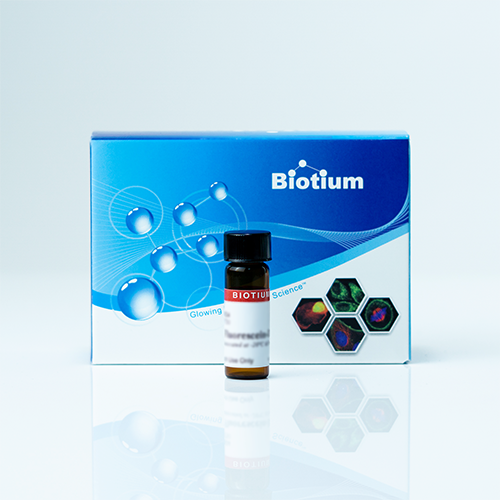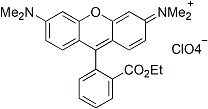TMRE, 2 mM in DMSO
TMRE (Tetramethylrhodamine ethyl ester, perchlorate) is used to quantify changes in mitochondrial membrane potential in live cells.
Wishlist updated! View wishlist
Product Description
TMRE (Tetramethylrhodamine ethyl ester, perchlorate) is a cell permeable, cationic, red-orange fluorescent dye that accumulates active mitochondria. It is used to detect changes in mitochondrial membrane potential of live cells via microplate fluorometry, fluorescence microscopy and flow cytometry. Inactive or depolarized mitochondria have decreased membrane potential and thus fail to retain the TMRE dye.
- Red-orange fluorescence, λEx/λEm (MeOH) = 549/574 nm
- Suitable for staining mitochondria in live cells only. It does not work with fixed cells
- TMRE is used for quantitative measurement of membrane potential using the Nernst equation
- Store the solution at 4°C and protect from light
- C26H27ClIN2O7
- MWt: 515
TMRE and TMRM (70017) are preferred dyes for quantitative measurements of membrane potentials using the Nernst equation. TMRE can be used to separate viable and non-apoptotic cells from cell sorting samples (1). TMRE staining is reversible and does not affect cell proliferation and viability. TMRE is also available in solid form (70016).
References
1. J Histochem Cytochem doi: 10.1369/0022155413520404


